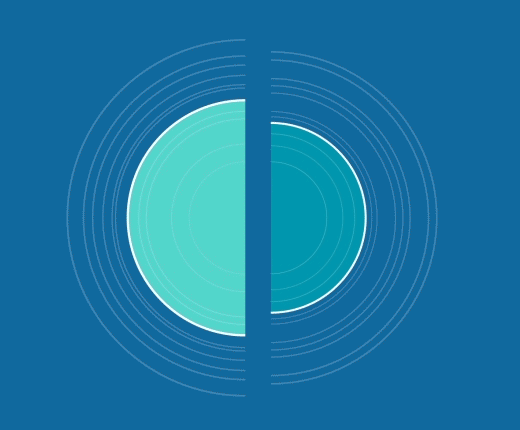

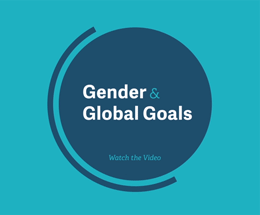
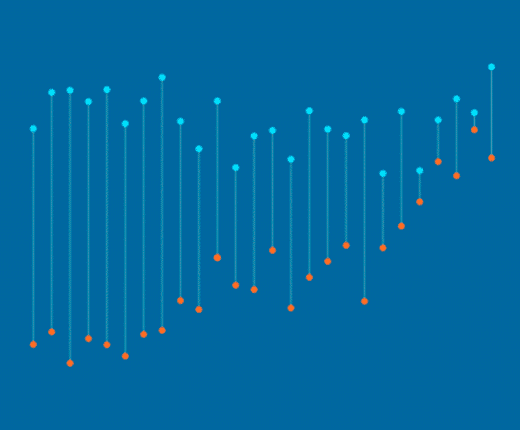

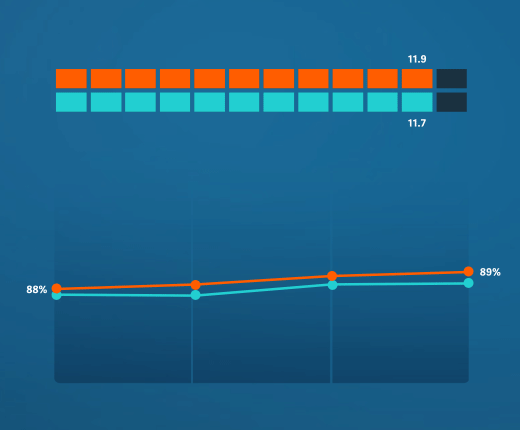
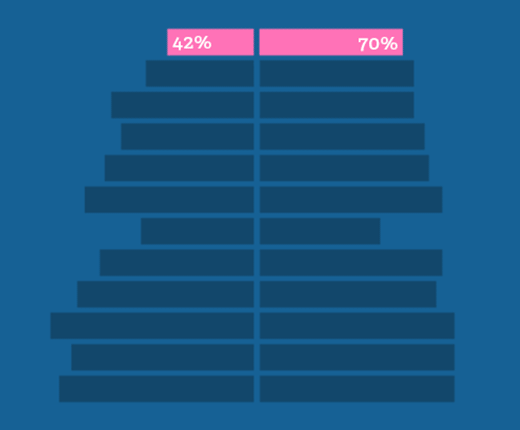
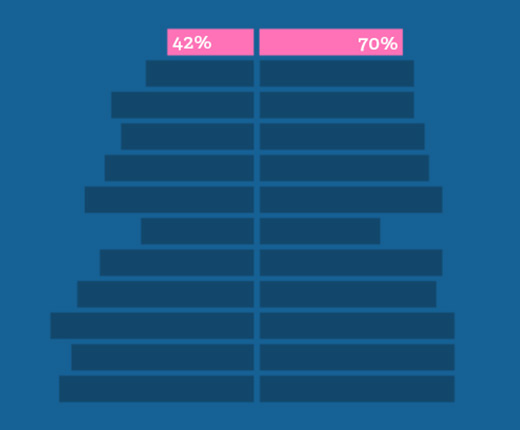
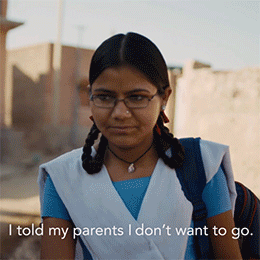
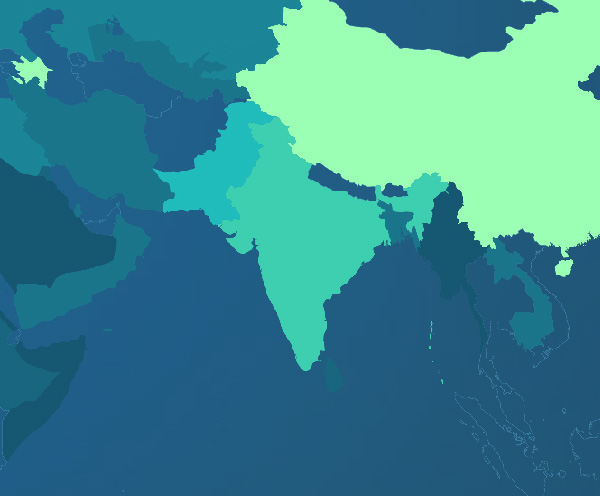
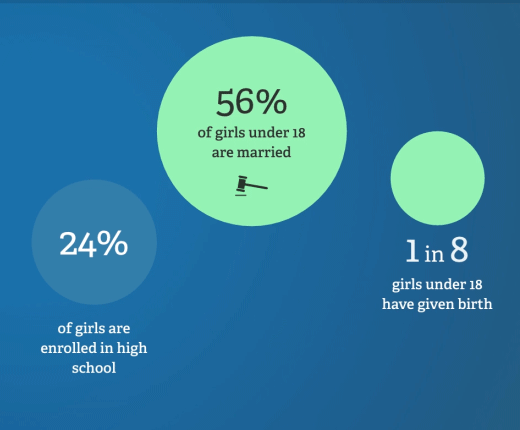
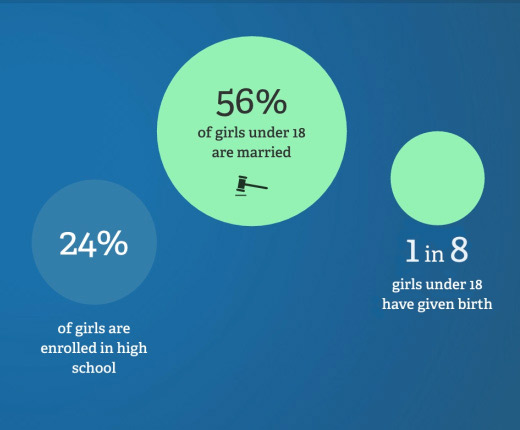
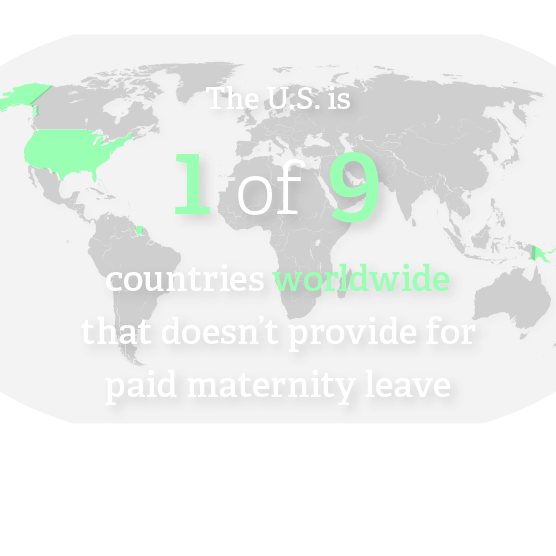

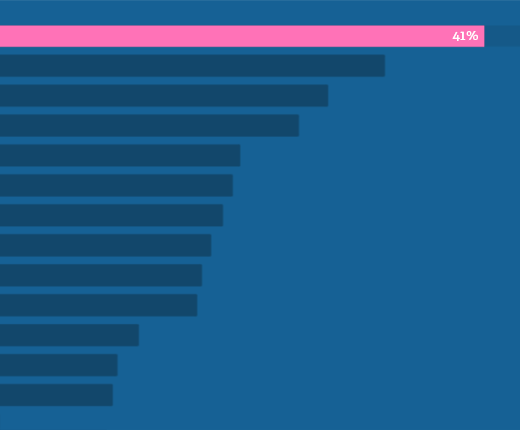
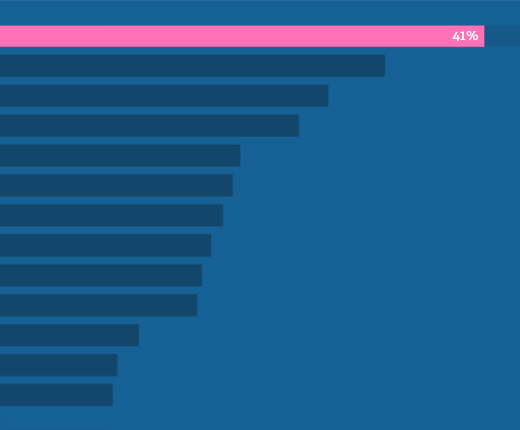
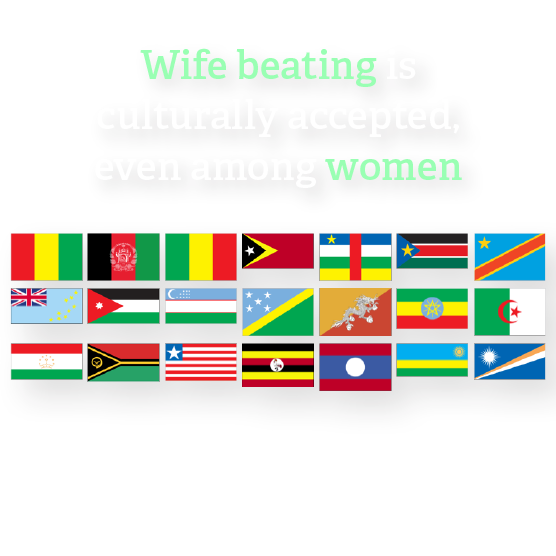

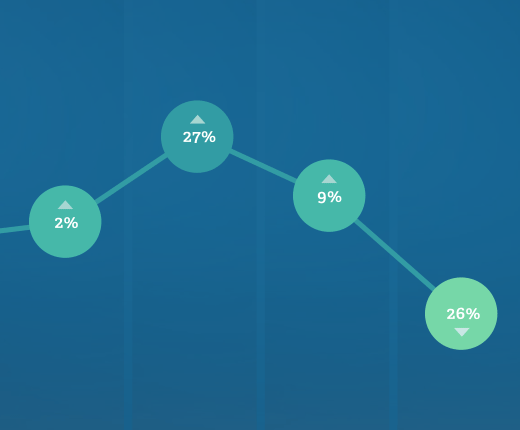
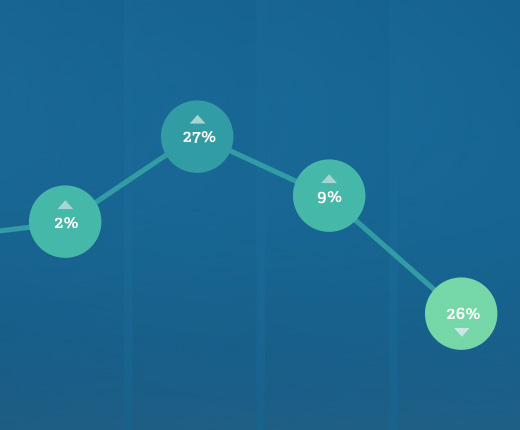
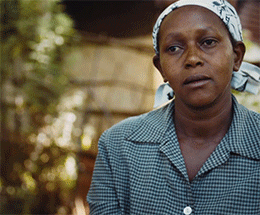
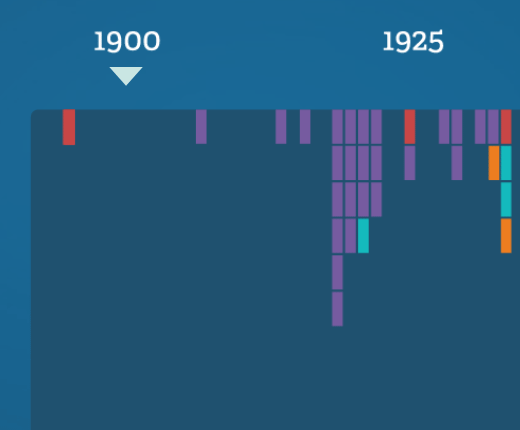
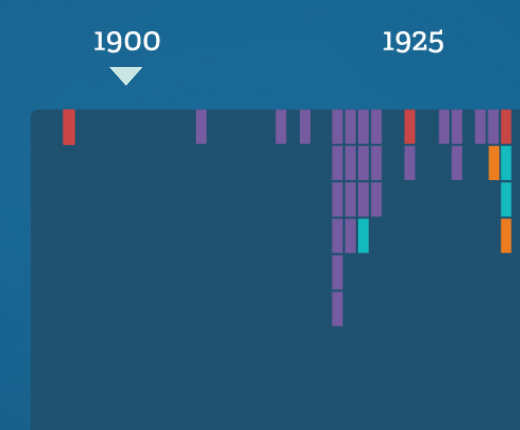
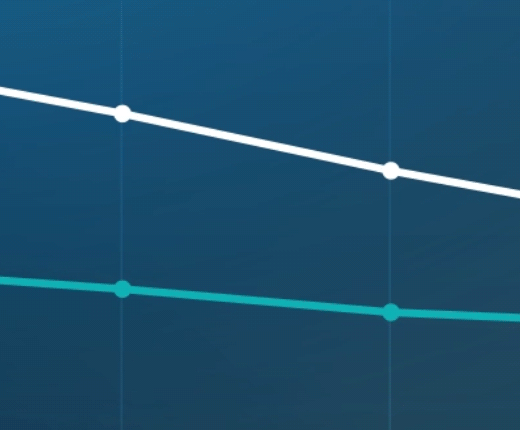
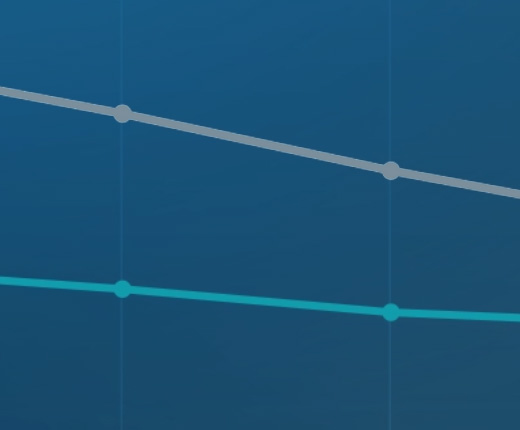
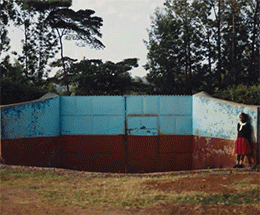
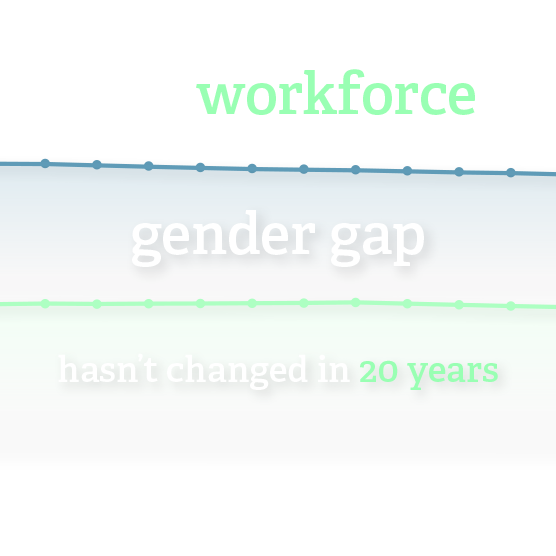
Explore how gaps in data limit our insight into half the world’s population.
Data and evidence tell us things we wouldn’t otherwise know. For example, test data can help doctors pinpoint what’s wrong with their patients and how best to treat them. Consumer data can tell product designers what their customers need and desire. Profit data can show investors whether a company is a sound financial bet.
So what can data tell us about a girl born in Somalia, Uruguay, Japan, or Bangladesh? The answer is: Not nearly enough.
In countries around the world, but particularly in developing nations, data on women and girls are limited. That’s because data are often not disaggregated by sex. For example, data on asset ownership are gathered per household, so in a home with a husband and wife, we do not know whether the wife has access to a savings account or land. Data on poverty are also only collected per household, preventing us from counting how many women are living in poverty.
Gender data gaps obscure our insight into the lives of half the population. They prevent governments and policymakers from recognizing the constraints on women and girls in their countries, and from implementing effective gender-sensitive programs that maximize impact not only for women and girls but for entire families and communities. If these issues aren’t being measured, how can they be understood and solved?
The first step in improving the scope of gender data is identifying where key gaps exist. In its inaugural 2014 report 1, Data2X (an initiative with many partners, housed at the United Nations Foundation) identified 28 high-priority data gaps related to women and girls. These gaps span five subject areas essential to female wellbeing and empowerment: health, education, economic opportunities, political participation, and human security.
In the area of economic opportunities, many data gaps relate to women’s participation in the informal economy. This issue was first brought to light in 1996 by Ela Bhatt, the pioneering founder of India’s Self-Employed Women’s Association. As one of the few female lawyers in India at the time, Bhatt was representing a local textiles labor union but found herself legally handicapped since the law only granted rights and recognitions to industrialized laborers — not to those working informally from their homes, as the vast majority of female textile workers did.
After learning that only 6 percent of women in her country were officially counted as employed, she convinced researchers to collect and analyze data on people (mostly women) working from their homes. That data, in turn, helped to convince the International Convention on Home Work to recognize the rights and contributions of employed home workers and established new standards for employment conditions.
Because women constitute a higher percentage of informal workers than men, women’s significant participation in industries ranging from construction to trade, and their substantial contributions to national economies, go largely uncounted.
Despite the gains for home-based workers that Bhatt inspired, many data gaps still exist in India and other developing countries in the broader realm of informal employment, which the International Labour Organization defines as “work that lacks legal or social protection, whether in informal enterprises, formal enterprises, or households.”2 Because women constitute a higher percentage of informal workers than men, women’s significant participation in industries ranging from construction to trade, and their substantial contributions to national economies, go largely uncounted.
Another data gap area that disproportionately impacts women is civil registration and vital statistics (CRVS), the system by which countries record statistics on events such as births and deaths, marriages and divorces. Many CRVS systems in developing countries lack effective protocols for issuing birth certificates, for example, which are the foundation for other identity documents. In fact, around 35 percent of all children under the age of 5 — or an estimated 230 million children — have not had their births registered.3
On a general level, identity documentation is fundamental for individuals to exercise their rights as citizens and to access entitlements — precisely some of the most crucial areas with gender gaps.4 On a more specific level, weaknesses in civil registration systems can make girls and women more vulnerable. Without a birth or marriage certificate, underage girls who are forced into marriage have no legal backing. If they fall victim to human trafficking, they cannot be identified, much less found. Inadequate or non-existent marriage and divorce documents can also prevent women from inheriting property and registering their children in certain countries, the latter of which perpetuates this cycle.
Gender data gaps exist around the world. In the United States, for example, as in most countries, data are scarce on violence against women, a critical area for addressing female security. Data are also lacking on the number of female executives, which has important implications on women’s economic empowerment.
Only by collecting consistent and complete data can governments and policymakers fully understand the issues facing women and girls, develop targeted solutions, and measure progress or lack thereof.
These and other data deficiencies are more than just gaps in information; they are gaps in development priorities and policies. Only by collecting consistent and complete data can governments and policymakers fully understand the issues facing women and girls, develop targeted solutions, and measure progress or lack thereof.
As articulated in the UN High Level Panel report on the post-2015 development agenda, the world needs a “data revolution … to strengthen data and statistics for accountability and decision-making purposes.”5 Tackling gender data gaps, which affect us all, is a critical first step before a real revolution can begin.
1 Mapping Gender Data Gaps (Data2x, March 2014)
2 Women and Men in the Informal Economy: A Statistical Picture, Page 1 (International Labour Organization, 2013)
3 Every Child’s Birth Right: Inequities and Trends in Birth Registration (UNICEF, 2013)
4 Civil Registration, Vital Statistics and Gender (Data2x, September 2014)
5 A New Global Partnership: Eradicate Poverty and Transform Economies Through Sustainable Development: The Report of the High-Level Panel of Eminent Persons on the Post-2015 Development Agenda (United Nations, May 2013)






























